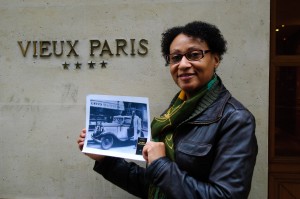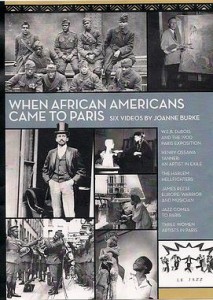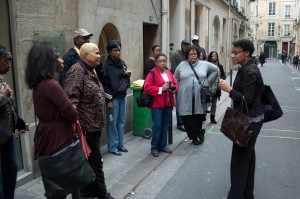Where has the time flown, my UrbanTravelGirl friends? Merci beaucoup to those of you who missed hearing from me, wondered where I’ve been, and dropped me e-mails asking. I can’t believe that Christmas and New Year’s are nearly here, as it seems like just yesterday that I was excitedly preparing for my France adventure and move overseas. But I’ve been here nearly 12 months now, and it’s definitely been a life-changing learning experience.
My posts have been far more sporadic than I’d planned as I’ve spent so much time working like mad—and when you’re a freelance journalist and consultant like me, you need to “make hay while the sun shines,” as the saying goes. In the New Year, I hope to have more time for reflection about my African-American female expat life in France—and will happily share it with you once I do. In the meantime, seeing as the holidays are knocking on the door, I want to share a fascinating new Blue Lion Films DVD that’s parfait for the Francophile on your last-minute shopping list. (But really, who needs an excuse to think about France? Anytime’s a good time.)
“When African Americans Came to Paris” is a labor of love from Walking the Spirit Tours CEO and Founder Julia Browne—an incredible sister who describes herself as “British-born, Canadian-raised, and French by affinity”—award-winning documentarian Joanne Burke, and her writer/cameraman husband David Burke. This DVD features six short videos, each one between just four and seven minutes long. And each offers a fascinating historical take on black folks in the 20th century and the Paris that offered them an embrace long denied by their American homeland. Burke researched the content, tracked down the archival images, and narrates each segment, while Browne served as a consultant, promoter and distributor for the project.

Jazzed up with period music, black-and-white still and video images and smart, thoughtful commentary by scholars, artists and other present-day contributors, each segment is a stand-alone glimpse at why France, and specifically Paris, occupies such a mythological place in the minds of black folks. As contributor and Bates College professor Marcus Bruce states in the introductory video: “When African-Americans come to Paris, they discover the terms by which they want to define themselves.” It was true centuries ago, and newly arrived emigrants like me still feel the same.
“When African Americans Came to Paris” includes:
- W.E.B. DuBois and the 1900 Paris Exposition;
- Henry Ossawa Tanner: An Artist in Exile;
- The Harlem Hellfighters;
- James Reese Europe: Warrior and Musician;
- Jazz Comes to Paris;
- Three Women Artists in Paris.
The DVD’s videos vividly bring to life what Browne offers through her company’s walking-and-bus tours of current-day Paris, from strolls past artist Henry Ossawa Tanner’s first apartments near the Louvre to trips through the still-vibrant Montmartre quartier where black American entertainers and entrepreneurs like Ada “Bricktop” Smith and Eugene Bullard (also the world’s first black combat pilot) left their indelible musical imprints in the 1920s. Keeping the spirit of the videos alive on both sides of the Atlantic, the Burkes and Browne will take to the road, sharing “When African Americans Came to Paris” at conferences and special screenings in Paris and in the United States.
- Walking the Spirit Tours’ Julia Browne leads a group through Paris’ Latin Quarter. Her company’s year-round tours expose visitors to 200 years of black American history in the City of Light. (Daniel Morris photo)
So whether you’re planning a trip to Paris, longing to relive previous jaunts to the City of Light—or want to travel to France by way of these incredible vignettes—pick up this DVD. It’s available in both U.S. and European formats for schools, corporations and government agencies. And what I especially love is that Blue Lion offers a comprehensive Teacher’s Guide for students in grades six through 12. Nothing like encouraging a love of international travel and African-American history at the same time.
Bon voyage!

